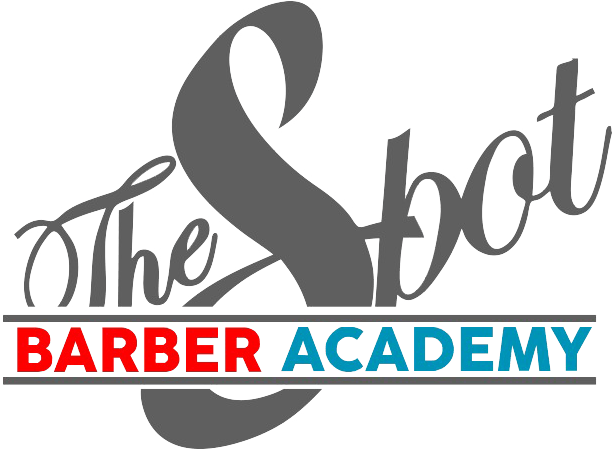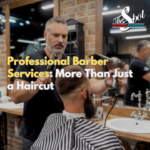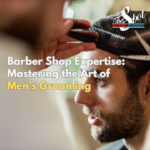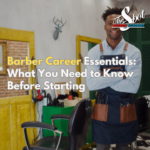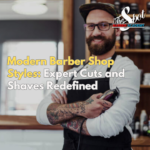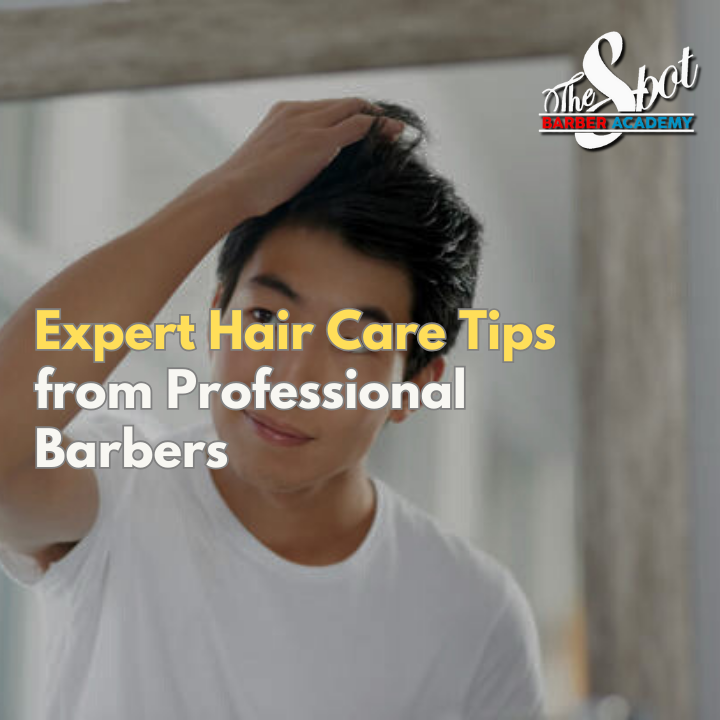Introduction: The Importance of Expert Hair Care
Taking care of your hair is an essential aspect of personal grooming. In this detailed guide, we’ll delve into expert hair care tips provided by professional barbers. These insights not only help you maintain healthy hair but also ensure you are up-to-date with the latest grooming trends.
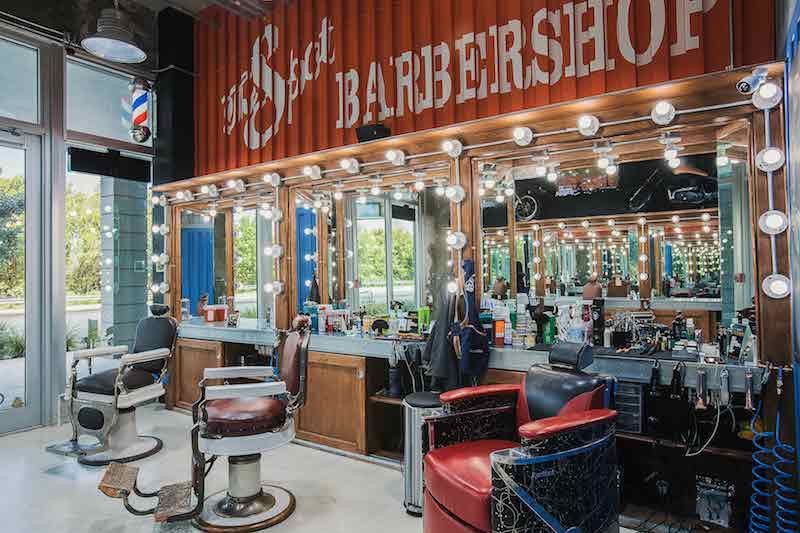
Section 1: Understanding Your Hair Type
Before we dive into specific care tips, it’s important to understand your hair type. Hair can be categorized into four main types: straight, wavy, curly, and kinky. Each type has its unique characteristics and requires a different approach to care. Knowing your hair type is the first step in adopting a routine that works for you.
-
1.1 Straight Hair: Characteristics and Care
- Definition: Straight hair is characterized by its lack of curls. It falls flat from the roots to the tips.
- Care Tips: This hair type can become oily quickly. Use lightweight, volumizing shampoos and avoid heavy conditioners that can weigh hair down.
-
1.2 Wavy Hair: Embracing the Natural Flow
- Definition: Wavy hair lies somewhere between straight and curly. It forms a loose S-shape naturally.
- Care Tips: Hydrating products work well for wavy hair. Avoid over-washing to maintain its natural wave and use curl-enhancing products for definition.
-
1.3 Curly Hair: The Art of Bounce and Definition
- Definition: Curly hair has a more defined S or Z-shaped pattern. It ranges from loose curls to tight ringlets.
- Care Tips: Moisture is key for curly hair. Use sulfate-free shampoos and deep conditioners. Avoid brushing when dry to maintain the curls and reduce frizz.
-
1.4 Kinky Hair: Celebrating Tightly Coiled Splendor
- Definition: Kinky hair features a tightly coiled pattern and is often very delicate.
- Care Tips: This hair type requires gentle handling. Use hydrating and strengthening products. Moisturizing regularly and using protective styles can help maintain its health.
-
1.5 Identifying Your Hair Type
- Self-Assessment: Look at your hair in its natural state after washing. Observe the pattern it forms naturally.
- Consultation with a Professional: A barber or hairstylist can help accurately determine your hair type and offer tailored advice.
-
1.6 The Importance of Knowing Your Hair Type
- Customized Care: Understanding your hair type allows you to choose products and treatments that are most beneficial.
- Avoiding Damage: Using the wrong products or techniques can damage your hair. Knowing your type helps prevent this.
Section 2: Daily Hair Care Routine
A proper daily hair care routine is vital for maintaining healthy hair. This section covers essential steps and tips for everyday hair maintenance, suitable for various hair types.
-
2.1 Shampooing and Conditioning: Best Practices
- Choosing the Right Products: Select shampoos and conditioners based on your hair type. For example, use volumizing shampoos for fine hair and hydrating ones for dry hair.
- Shampooing Technique: Apply shampoo to the scalp and massage gently. Avoid harsh scrubbing which can damage hair follicles.
- Conditioning Tips: Apply conditioner mainly to the ends of your hair, not the scalp, to avoid greasiness. Leave it on for a few minutes before rinsing.
-
2.2 Drying Your Hair: Minimizing Damage
- Towel Drying: Gently pat your hair with a towel instead of rubbing, which can cause frizz and breakage.
- Using a Hairdryer: When using a hairdryer, keep it on a lower heat setting and hold it at least 6 inches away from your hair.
- Air Drying: Whenever possible, let your hair air dry. It’s the most gentle method and helps maintain hair health.
-
2.3 Combing and Brushing: Techniques for Different Hair Types
- For Straight and Wavy Hair: Use a wide-tooth comb or paddle brush. Start from the ends and work your way up to prevent breakage.
- For Curly and Kinky Hair: Comb your hair while it’s wet and conditioned to detangle without causing damage.
-
2.4 Scalp Care: Foundation of Healthy Hair
- Regular Scalp Massage: Use the pads of your fingers to massage your scalp. This stimulates blood flow and can promote hair growth.
- Avoiding Product Build-up: Use clarifying shampoos occasionally to remove build-up from styling products and sebum.
-
2.5 Managing Hair Oils: Balancing Natural Oils
- Avoid Over-washing: Washing your hair too often can strip it of its natural oils, leading to dryness.
- Using Natural Oils: Consider applying natural oils like argan or coconut oil to the ends of your hair for extra nourishment.
-
2.6 Nighttime Hair Care: Protecting Your Hair While You Sleep
- Silk or Satin Pillowcases: These materials are gentler on the hair and can reduce breakage and frizz.
- Loose Hairstyles: Tie your hair in a loose braid or ponytail to prevent tangling and damage overnight.
Section 3: Styling Your Hair
Styling your hair is an essential part of your grooming routine. This section offers expert advice on choosing and using styling products, as well as tips for achieving the perfect look.
-
3.1 Choosing the Right Styling Products
- Understanding Different Products: Learn about various products like gels, pomades, waxes, and creams, and their intended effects on different hair types.
- For Hold and Shine: Identify products based on the hold (light, medium, strong) and shine (matte, natural, high shine) they provide.
- Natural vs. Chemical Products: Consider the benefits of natural ingredients over chemical-based products for hair health.
-
3.2 Expert Styling Tips
- Pre-Styling Care: Use a heat protectant before applying heat styling tools to prevent hair damage.
- Using a Blow Dryer: Master techniques for using a blow dryer to achieve volume and desired shape.
- Applying Products Effectively: Learn the right amount of product to use and the best way to apply it for your hair type and style.
-
3.3 Hairstyle Trends and How to Achieve Them
- Popular Men’s Hairstyles: Explore current trends like the textured crop, quiff, and slick back, and how to style them.
- Long Hair Styling: Understand the nuances of styling longer hair, including the use of serums and leave-in conditioners.
- Short Hair Precision: Tips for achieving sharp, defined styles in short hair, utilizing pomades and waxes.
-
3.4 Tools for Styling
- Essential Styling Tools: Discover must-have tools like combs, brushes, blow dryers, and flat irons.
- Maintaining Your Tools: Learn how to clean and maintain your styling tools for their longevity and effectiveness.
-
3.5 Heat Styling: Do’s and Don’ts
- Avoiding Heat Damage: Strategies for minimizing heat damage, including the use of lower temperatures and heat protectants.
- Effective Use of Curling Irons and Straighteners: Techniques for using these tools to achieve various looks while maintaining hair health.
-
3.6 Finishing Touches: Setting Your Style
- Using Hairspray: Guidance on the correct use of hairspray to set your style without making hair stiff or sticky.
- Touch-up Tips: Tricks for maintaining your hairstyle throughout the day, including the use of portable styling products.
Section 4: Hair Health and Nutrition
A key aspect of maintaining healthy hair is understanding the role of nutrition. We’ll explore the vitamins and nutrients essential for hair health and recommend dietary changes that can improve the quality of your hair.
Section 5: Common Hair Problems and Solutions
- 5.1 Dealing with Hair Loss: Learn about the causes of hair loss and effective ways to tackle it.
- 5.2 Dandruff Management: We’ll provide expert advice on managing dandruff, including lifestyle changes and products that can help.
Section 6: Seasonal Hair Care
Your hair care routine should adapt to different seasons. We’ll offer tips for protecting your hair from the harsh effects of summer sun and winter cold, ensuring it remains healthy year-round.
Section 7: Barber’s Advice for Specific Hairstyles
- 7.1 Long Hair: Discover the best practices for maintaining long hair, from regular trims to specific styling techniques.
- 7.2 Short Hair: Learn how to keep short hair in top condition and styled to perfection.
Section 8: Advanced Hair Care Techniques
We’ll dive into advanced techniques such as deep conditioning treatments and scalp massages, explaining how these can benefit your hair health.
Section 9: Myths and Facts About Hair Care
Dispelling common hair care myths is essential for proper hair management. We’ll separate fact from fiction, providing you with reliable information to care for your hair.

Section 10: DIY Hair Care Solutions
Embracing DIY hair care solutions can be both fun and effective. This section is dedicated to natural, easy-to-make remedies that you can try at home to maintain healthy and vibrant hair.
- 10.1 Homemade Shampoos and Conditioners
- Natural Shampoo Recipes: Explore recipes for making your own shampoos using ingredients like coconut milk, aloe vera, and essential oils.
- DIY Conditioners: Learn how to create nourishing conditioners with items like honey, avocado, and yogurt.
- 10.2 Natural Hair Masks for Deep Conditioning
- Moisturizing Masks: Discover recipes for hydrating masks, perfect for dry and brittle hair, using ingredients like banana, olive oil, and eggs.
- Protein Treatments: Create protein-rich hair masks with ingredients like mayonnaise and egg to strengthen your hair.
- 10.3 Scalp Treatments
- DIY Scalp Scrubs: Recipes for natural scrubs that help exfoliate the scalp, promoting healthy hair growth, using ingredients like brown sugar and oatmeal.
- Oil Treatments for Scalp Health: Learn about the benefits of oils like tea tree and coconut oil for maintaining a healthy scalp.
- 10.4 Natural Remedies for Common Hair Problems
- Solutions for Dandruff: Homemade remedies for dandruff using natural ingredients like lemon juice and apple cider vinegar.
- DIY Remedies for Hair Loss: Tips on using natural ingredients like amla, fenugreek, and onion juice to combat hair loss.
- 10.5 Styling Products You Can Make at Home
- Homemade Hair Gels: Simple recipes for making your own hair gels with flaxseeds or aloe vera gel.
- Natural Hair Sprays: Create your own hair sprays for setting your hairstyle using ingredients like sugar and essential oils.
- 10.6 Tips for Effective DIY Hair Care
- Testing for Allergies: Importance of patch testing homemade products to check for allergic reactions.
- Patience and Consistency: Emphasize the need for regular use and patience to see visible results from natural remedies.
Conclusion: Elevating Your Hair Care with Professional Training
Incorporating these expert hair care tips into your routine will undoubtedly improve the health and appearance of your hair. For those interested in taking their passion for hair care to the next level, consider joining our Barbering program at The Spot Barber Academy. Our program offers comprehensive training in the latest techniques and trends, helping you become a skilled professional in the world of barbering.

